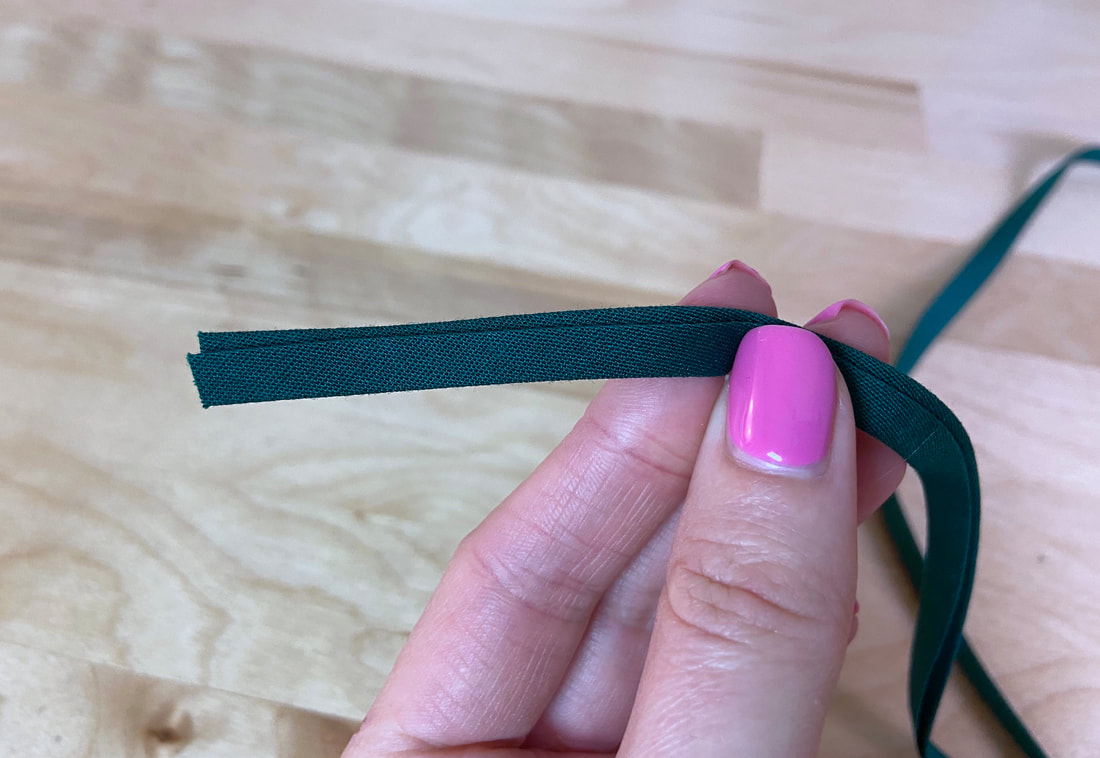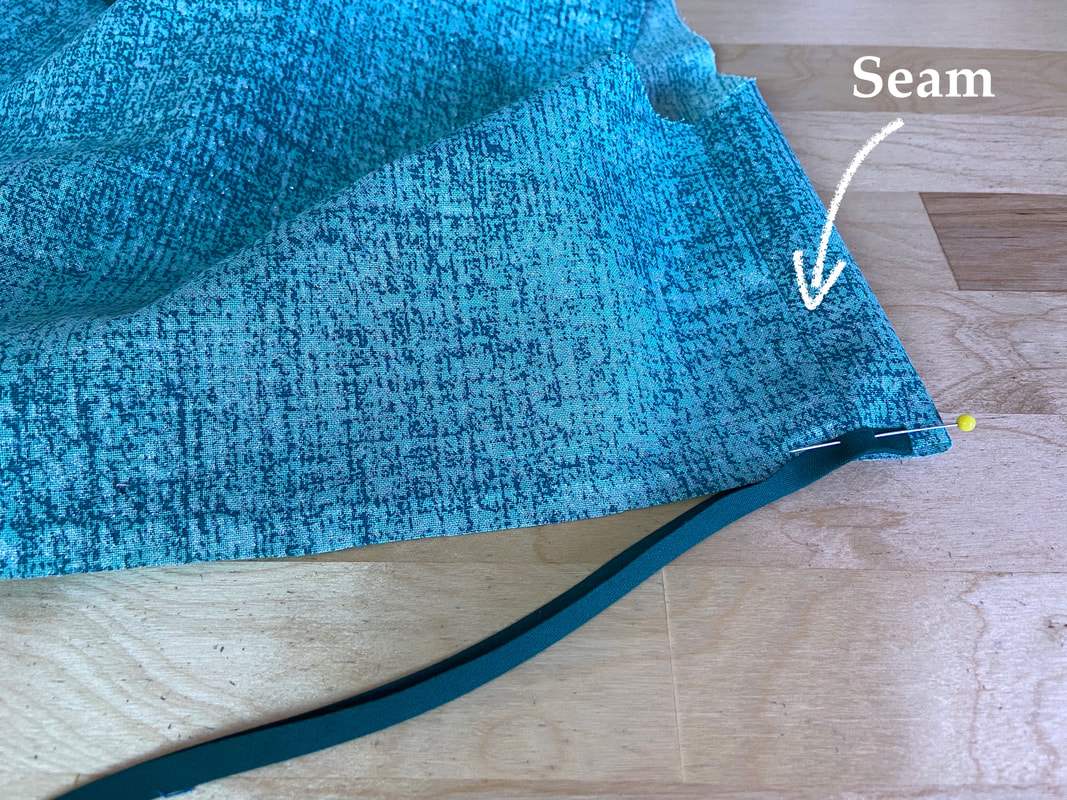The difference between an exposed hem and folded-up hem is not only the visibility of the binding but also the hem allowance requirements.
While an exposed bound hem does not require hem allowance, binding that is hidden on the wrong side of the hemline requires hem allowance such that the edge can be folded up without distorting the length of the garment.
A non-exposed bound hem finish requires a single fold inward. The resulting folded edge corresponds to the garment’s finished hemline. As is true for most single folded-up hems, the garment’s cut edge is clean finished first (with binding, in this case) after which the hem allowance is folded up and either blind stitched or topstitched to the garment surface.
Essentially, the binding in this case serves the purely functional task of clean finishing the fabric cut edge- it does not serve a decorative purpose. A neutral or matching color binding is still advisable regardless of it being hidden on the inside of the garment.
In this example, you will learn how to attach a pre-folded, pre-packaged binding.
First, choose the pre-packaged double fold binding in the appropriate width and color for your project. A ¼” width is perfect for lightweight, thin fabrics. A ½” width works well with thicker, textured fabrics.
If you take a closer look at the double fold binding, you will notice that it is not folded perfectly down the center. One of its sides is a little bit longer than the other. As you’ll see below, this longer side will correspond to the wrong side of the fabric in the stitching process.
1. Open the binding and place the hem’s cut edge between the binding folds such that the folded end aligns a little past one of the garment’s seams. The wider side of the binding should correspond to the wrong side of the fabric as shown.
2. Continue wrapping the folded binding around the hem’s raw edge. Insert pins to keep the binding in this position.
3. When arriving at the starting point, fold the end of the binding at about ¼” and overlap the other binding end such that the fold aligns with the garment seam.
4. Hand baste the binding in this position prior to machine stitching. Pre-folded binding tends to slip away from the fabric edge it encases especially if the fabric is flimsy and thin. Hand basting will prevent this by keeping all the layers properly aligned.
5. From the face side of the garment, topstitch through the double folded binding next to the binding’s inner fold line as shown.
Once stitched, remove the temporary hand basting using a seam ripper.
Stitch close to this fold, making sure to catch the second binding layer underneath. This is the reason why the underside of the binding should be a little wider.
6. Slipstitch the folded end of the binding to the binding layer underneath as shown.
7. Iron the finished binding in the direction it was stitched.
8. Next, fold the bound hem edge up towards the wrong side of the garment at the hem allowance distance. The fold should correspond to the garment’s finished hemline. Iron as you fold and insert pins horizontally to hold the folded edge down.
Use a gage pointer or ruler to fold the hem allowance evenly throughout. The hem allowance in this example is 1”.
9. For an invisible finish on the face of the garment, blind stitch the binding’s top fold to the garment’s wrong side as shown. Use a slipstitch for this process.
For a visible stitch on the face of the garment, topstitch from the wrong side of the hem right underneath the binding as shown. Use the binding edges(s) as a stitching guide.


















